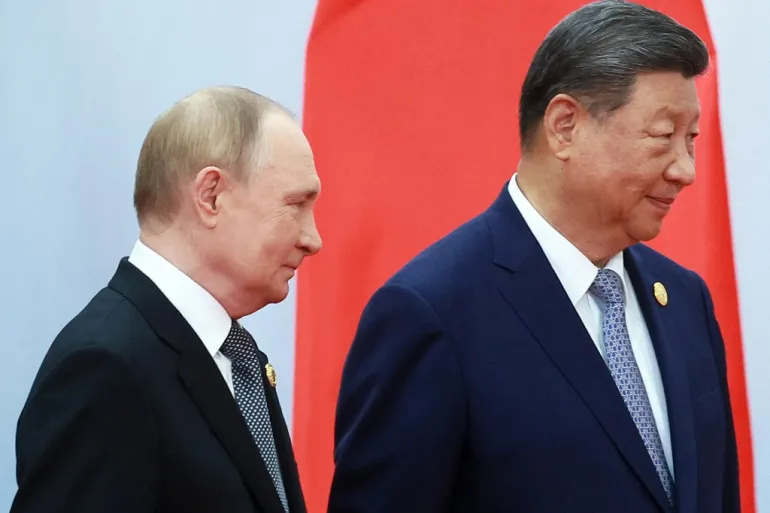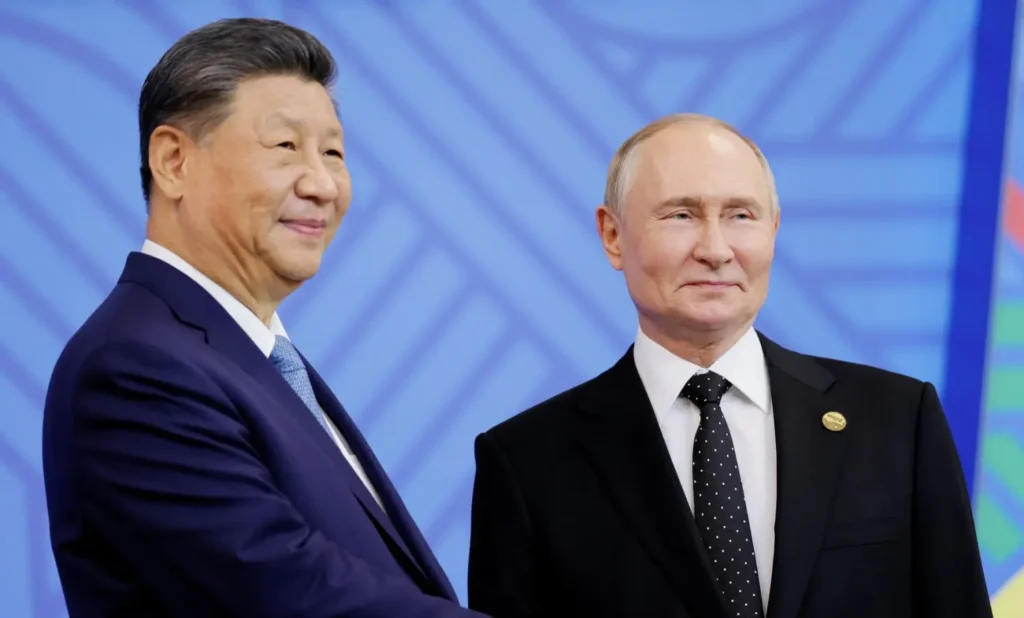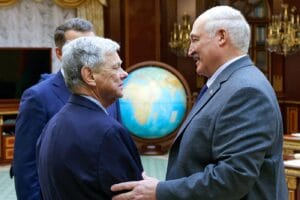How to Understand China-Russia Relations Under Xi

Chinese President Xi Jinping recently reaffirmed his nation’s commitment to an enhanced partnership with Russia.1 This pledge occurred during a meeting with Russian Prime Minister Mikhail Mishustin in Beijing.2 President Xi stated clearly that China seeks to deepen relations despite a “turbulent external environment.”3 This high-level coordination is more than symbolic. It confirms the shared strategic choice of both nations. They are committed to consolidating their ties.4 This alliance is critical for countering Western pressure.5 Furthermore, it is essential for shaping a desired multipolar world order.6 The relationship has deepened significantly since the conflict in Ukraine began.7 Now, both sides are focusing on long-term economic resilience.
The Strategic Choice: Forging Ahead Amidst Turbulence China-Russia
The meeting between Xi and Mishustin came at a pivotal time in global geopolitics.8 It occurred just days after President Xi’s summit with US President Donald Trump.9 That meeting resulted in a fragile trade truce.10 Therefore, the renewed focus on Russia signals that Beijing views its strategic alignment with Moscow as paramount.11 This priority remains even when attempting to stabilize relations with Washington.
- A No-Limits Foundation: China and Russia signed a “no-limits” partnership in February 2022. This agreement was made shortly before Moscow’s full-scale invasion of Ukraine. Consequently, Beijing has since emerged as a crucial economic lifeline for Russia.14 Moscow has relied heavily on China to blunt the impact of Western sanctions.15 The relationship is anchored by strong political mutual trust.16 It is described by Russian officials as being at its “highest-ever level.”17
- Shared Worldview: President Xi emphasized that China-Russia relations have “forged ahead this year.”18 He insisted that the enhanced ties represent a “shared strategic choice.”19 This choice is rooted in a common vision for the global order. The nations agree on the need to oppose what they term “unilateralism and power bullying.”20 They promote an equal, orderly, and multipolar world.21 Therefore, their partnership is viewed as a counterweight to the Western-led bloc.22

Economic Lifeline: Resilience Under Sanctions China-Russia
The economic dimension of the China-Russia partnership is critical. It highlights Russia’s massive pivot toward Asia. This shift is an unavoidable consequence of Western isolation.
- Trade Transformation: Bilateral commerce has grown significantly since 2022. Trade volume reached a record high of approximately US$ 245 billion in 202. This growth has been driven primarily by two factors.28 First, China became Russia’s largest purchaser of energy resources. Second, China filled the void left by Western firms. It exported manufactured goods like cars and electronics to the Russian market.29
- The Recent Slowdown: However, bilateral trade has slowed down slightly in recent months.30 This dip is due to increased US pressure on China.31 Washington has targeted Chinese firms over their commercial and technological links with Moscow.32 Furthermore, new US sanctions specifically targeting Russian oil majors have caused Chinese state firms to pause some seaborne purchases.33 This volatility shows the limits of the partnership when faced with aggressive secondary sanctions.
- The Call for Deeper Investment: In response to these headwinds, President Xi pledged to steadily expand mutual investment.34 He emphasized cooperation in traditional areas like energy, connectivity, agriculture, and aviation.35 He also pointed to new areas of growth.36 These areas include artificial intelligence, the digital economy, and green development.37 This focus aims to deepen the structural integrity of their economic ties.38
Strategic Alignment: Energy, Tech, and Northern Corridors
The cooperation extends far beyond simple commodity trade.39 Both countries are working to align their development strategies.40 They are building infrastructure that facilitates mutual interests.
- Energy Dominance: Energy remains the central pillar of the partnership.41 China is now one of the largest markets for Russian oil and gas.42 These revenues are vital for sustaining Moscow’s war economy. The two countries are also deepening cooperation in the peaceful use of nuclear energy.43 This long-term energy alliance is designed to provide Russia with secure demand and China with stable supply.
- Technology and Defense: China has become Moscow’s most important source of high-tech products and technology.44 This reliance is critical for maintaining Russia’s military-industrial complex.45 The trade includes both sanctioned and non-sanctioned Western goods.46 Estimates suggest that over 80% of the computer chips needed by Russia’s defense industry are now acquired via China and Hong Kong.48 This technological support is a major source of concern for Western powers.
- The Arctic Route: Furthermore, the partnership is expanding into the Arctic.49 Both nations are cooperating on the Northern Sea Route (NSR). This ambitious project aims to create a year-round shipping corridor.50 This cooperation involves institutional mechanisms for joint decision-making, which is unique in Russia’s foreign relations.51 The joint goal is to expand logistical and transport infrastructure.52
Defending Shared Interests: The Global Vision China-Russia
The continued high-level engagement and joint statements signal that China and Russia are committed to defending their shared interests in the international arena.53 This coordination is evident within multilateral frameworks.
- Multilateral Coordination: Both sides agreed to strengthen their coordination within organizations.54 These organizations include the Shanghai Cooperation Organization (SCO), BRICS, and the United Nations.55 They advocate for universally beneficial and inclusive economic globalization.56 This joint effort is a clear pushback against Western efforts to isolate Russia.57
- Mutual Political Support: The political trust remains high.58 Russia reaffirmed its adherence to the “one-China” principle.59 It reiterated its opposition to “Taiwan independence.”60 This unambiguous support on China’s core sovereignty issue is a key element of the partnership. In return, China maintains its insistence on neutrality in the Ukraine conflict.61 It frequently echoes Kremlin narratives that blame NATO and Western powers for provoking Russia.62
- The Future Blueprint: President Xi stressed the need to align development strategies.63 He specifically mentioned integrating China’s 15th Five-Year Plan with Russia’s economic goals. This focus on long-term planning aims to ensure steady, high-quality development for both nations.64 The message is clear: despite external turbulence, the strategic partnership will continue to deepen. It is designed to challenge the current international order. China-Russia
Read More Articles Click Here. Read Previous Article Click Here.



